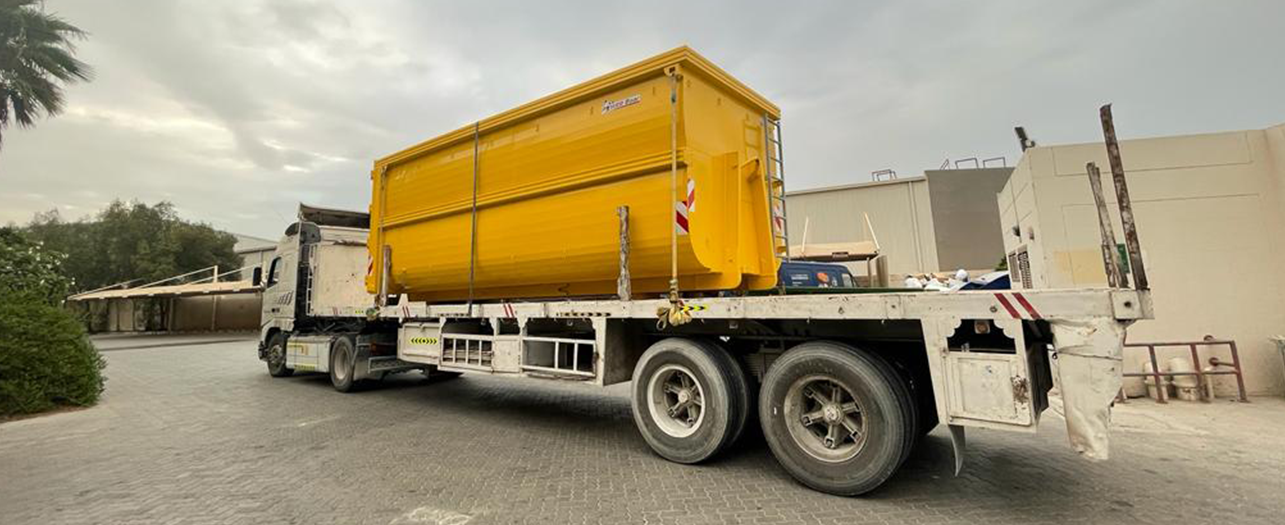Dubai is one of the most infrastructurally advanced multicultural cities in the world, a bustling metropolis in the heart of the Middle-East with a cosmopolitan population of working expats and local Emiratis alike. One of the most stringent demands from such a city is intelligent waste management that retains cleanliness and hygiene, and that is where the concept of waste routing enters the picture. Waste collection isn’t just about sending a few garbage trucks around the city to collect trash from every dustbin along the way. There’s a lot of planning and coordination that takes place. A process that involves analyzing high traffic areas and optimal collection times.
What Is Waste Routing?
Simply put, what is waste routing? It’s the shift from calendar-based pickups (every Tuesday, Thursday, Saturday) to a needs-driven model. Imagine each bin fitted with a small sensor, quietly monitoring fill levels and sending that data back over the city’s network. Behind the scenes, software crunches the numbers, flags containers nearing capacity, and creates an efficient path that cuts out empty or low-priority stops. It’s like having a GPS for garbage trucks, only smarter.
From Rigid Schedules to Real-Time Signals
Traditional waste collection treats all locations equally, even though demand varies wildly. A luxury hotel’s lobby bin might see dozens of daily depositions, while a back-alley dumpster hardly gets touched for days. Static timetables can’t adapt. But with smart routing, the bins themselves “talk” to dispatchers. When a container hits 80 percent full or when temperatures spike, hinting at potential fire risk, the system pushes that stop to the top of the list. Drivers get updated itineraries on tablets in their cabs so they never waste time on near-empty skips.
Why This Matters in Dubai
Dubai is not just any city; it’s a fast-moving experiment in urban innovation. Every new high-rise, mall extension, or expo pavilion adds to the waste stream. If you rely on old-school schedules, you’ll zigzag through quiet streets and return to crowded spots too late. This inefficiency shows up in three costly ways: extra fuel burned, more wear and tear on vehicles, and public frustration over messy sidewalks. Smart waste routing in Dubai turns each of those metrics around, delivering cleaner streets, lower operational costs, and fewer community complaints.

How Route Optimization Powers Waste Management
You may wonder, how is route optimization related to waste management? At its core, it’s a classic logistics puzzle: how do you visit N locations while driving the shortest possible distance? But in practice, the challenge adds layers: truck capacity limits, driver shift constraints, traffic congestion patterns, and noise-curfew windows in residential zones. Modern optimization engines juggle all those variables, testing countless route permutations in seconds to find the sweet spot: minimal miles, on-time pickups, and no overfull bins.
A Day with Smart Routing on the Road
Picture a morning shift in Jumeirah Lake Towers. The first notification pops up on the dispatcher’s screen: Bin A near a popular café is 95 percent full. Normally, that spot waits until mid-afternoon. Today, the nearest truck pivots, empties Bin A, then swings by two residential blocks before starting its regular run. At lunch, an office building’s paper container alerts at 85 percent; the system reorders the remaining stops so drivers handle that mid-day rush without delay. No frantic calls, no overflow. Just a quietly humming network keeping pace with real demand.
Making the Transition: Key Considerations
Implementing a waste routing platform isn’t a plug-and-play exercise. It requires a phased, collaborative rollout:
- Pilot in a Compact Zone: Choose an area with mixed usage such as shops, offices, apartments to test sensors and fine-tune alert thresholds.
- Train Your Team: Drivers need hands-on practice with in-cab routing apps; dispatchers must learn to trust dynamic schedules over habitual routes.
- Secure Your Data: Sensor feeds reveal location patterns; encrypt transmissions and control who can view dashboards.
- Measure What Matters: Track metrics like “miles driven per pickup,” “percent of bins serviced before hitting capacity,” and “driver idle time.”
- Iterate Quickly: Use early results to adjust sensor-reporting frequency or tweak algorithm parameters.
These steps ensure you capture the benefits of smart routing without disrupting essential service.
The Road Ahead for Dubai’s Waste Strategy
Beyond immediate gains, smart waste routing in Dubai has long-term implications. Integrating routing data with traffic management centers could help trucks avoid peak-hour jams. Linking bin analytics with environmental sensors, like odor or heat detectors, might alert municipal crews to potential hazards before they escalate. And as autonomous vehicles mature, routine pickups could go driverless, reserving human crews for high-priority or irregular pickups.
Dubai’s blend of rapid development and strong tech infrastructure makes it an ideal testbed for these innovations. By mastering waste routing, the city can set a global example of how data and logistics combine to create cleaner, more efficient urban environments. Whether you manage a single building or a citywide network, embracing this approach delivers immediate gains: lower costs, fewer complaints, and a smaller carbon footprint. POWER Bear, with its range of AI-powered smart bins makes waste route planning a breeze, equipped with advanced sensors and tracking chips that inform waste management authorities when they’re ready for collection and gather crucial data on waste collection routes. In the end, waste routing transforms a routine service into a strategic advantage, helping Dubai stay one step ahead in its quest to build a sustainable future.


